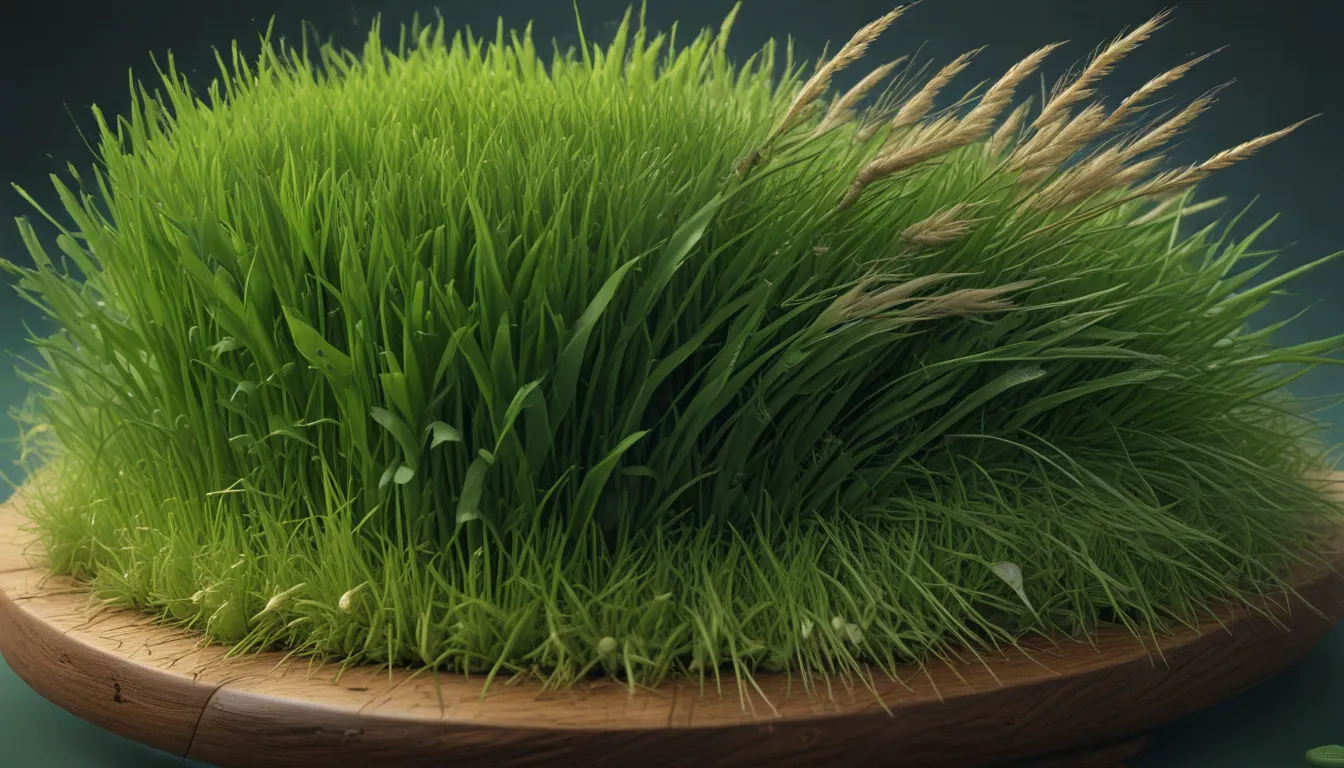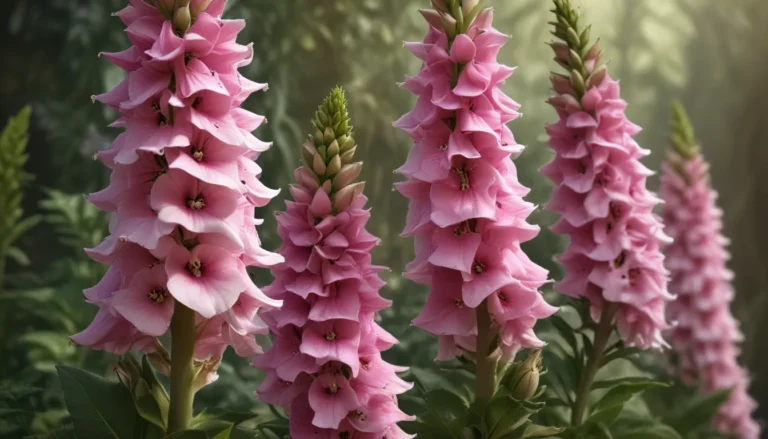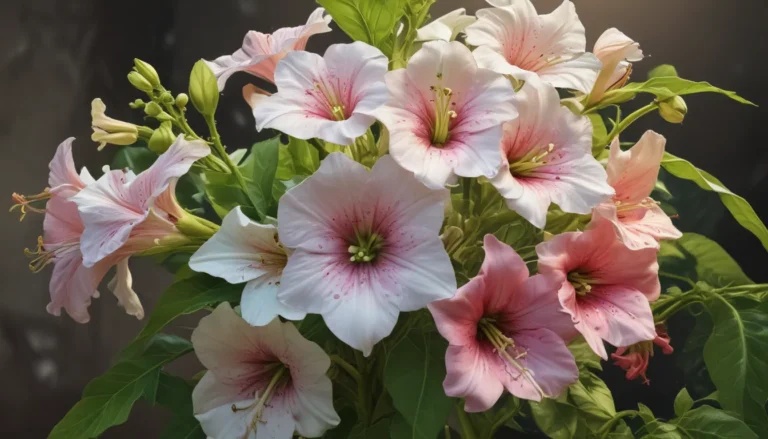The pictures we use in our articles might not show exactly what the words say. We choose these pictures to make you interested in reading more. The pictures work together with the words but don’t take their place. The words still tell you the important facts.
Bluebunch wheatgrass, a resilient and valuable grass species native to North America, is not just a plant but a crucial component of our ecosystems. From supporting wildlife to stabilizing soil and aiding in sustainable livestock production, this grass species has a significant impact on our environment. Join us as we explore 18 fascinating facts about bluebunch wheatgrass, shedding light on its ecological role, cultural importance, and practical applications.
Bluebunch Wheatgrass: A Keystone Species for Wildlife
Bluebunch wheatgrass serves as a vital food source for a variety of wildlife species, including deer, elk, and bighorn sheep. Its nutrient-rich foliage supports these animals' dietary needs, contributing to their health and survival in the wild.
Bluebunch Wheatgrass: A Pioneer in Ecological Restoration
Due to its adaptability and resilience, bluebunch wheatgrass is a preferred choice for ecological restoration projects. Its ability to thrive in diverse environmental conditions makes it an invaluable asset in efforts to rehabilitate degraded landscapes and promote biodiversity.
Bluebunch Wheatgrass: A Drought-Tolerant Grass Species
Bluebunch wheatgrass exhibits exceptional drought tolerance, enabling it to withstand arid conditions and thrive in semi-desert environments. Its capacity to endure water scarcity makes it a key player in sustaining ecosystems with limited precipitation.
Bluebunch Wheatgrass: A Champion of Soil Stabilization
With its extensive root system, bluebunch wheatgrass plays a pivotal role in preventing soil erosion and stabilizing the landscape. The deep-reaching roots help bind the soil together, reducing the risk of erosion and preserving the integrity of the ecosystem.
Bluebunch Wheatgrass: A Species with Medicinal Properties
Traditional indigenous communities have long recognized the medicinal properties of bluebunch wheatgrass. It has been utilized in herbal remedies for various ailments, showcasing its cultural significance and healing potential.
Bluebunch Wheatgrass: A Contributor to Carbon Sequestration
Bluebunch wheatgrass aids in carbon sequestration, capturing and storing carbon dioxide from the atmosphere. This ecological function contributes to mitigating climate change and maintaining environmental stability.
Bluebunch Wheatgrass: A Forage Resource for Livestock
Bluebunch wheatgrass serves as a valuable forage resource for livestock, offering nutritious grazing options for cattle and other domesticated animals. Its high forage quality and palatability make it a sought-after component of rangeland for sustainable livestock production.
Bluebunch Wheatgrass: A Species with Economic Importance
Beyond its ecological contributions, bluebunch wheatgrass holds economic importance in various sectors, including range management, agriculture, and restoration ecology. Its multifaceted value underscores its significance in sustaining livelihoods and supporting environmental initiatives.
Bluebunch Wheatgrass: A Native Grass of Western North America
Bluebunch wheatgrass is a native grass species that thrives in the western regions of North America, including the Great Basin and Intermountain West. Its natural habitat encompasses a diverse range of landscapes, from mountain foothills to semi-arid plains, where it contributes significantly to the ecological balance.
Bluebunch Wheatgrass: A Prominent Component of Rangeland Communities
In rangeland ecosystems, bluebunch wheatgrass forms an integral part of the plant community, contributing to the overall biodiversity and ecological balance. Its presence supports a myriad of plant and animal species, fostering a thriving and sustainable habitat.
Bluebunch Wheatgrass: A Species with Genetic Diversity
This grass species exhibits a diverse genetic makeup, encompassing various ecotypes and adaptations that enable it to thrive across different environmental conditions. Its genetic diversity underscores its evolutionary resilience and ecological versatility.
Bluebunch Wheatgrass: A Species with Adaptive Traits
The adaptive traits of bluebunch wheatgrass enable it to thrive in challenging environments, showcasing resilience in the face of climatic fluctuations and ecological pressures. Its capacity to adapt contributes to the stability and functionality of grassland ecosystems.
Bluebunch Wheatgrass: A Species with Conservation Relevance
Given its ecological significance and diverse benefits, bluebunch wheatgrass holds relevance in conservation efforts aimed at preserving native grassland habitats and promoting sustainable land management practices. Its conservation aligns with broader initiatives to safeguard biodiversity and ecosystem integrity.
Bluebunch Wheatgrass: A Species with Soil Improvement Capabilities
Through its root exudates and interactions with soil microorganisms, bluebunch wheatgrass enhances soil fertility and structure, fostering a conducive environment for other plant species and promoting overall soil health.
Bluebunch Wheatgrass: A Species with Cultural Significance
For indigenous communities, bluebunch wheatgrass holds cultural significance, symbolizing a connection to the land and traditional ecological knowledge. Its presence is intertwined with cultural practices and beliefs, reflecting a deep-rooted relationship with the natural world.
Bluebunch Wheatgrass: A Species with Wildlife Habitat Benefits
The presence of bluebunch wheatgrass enhances wildlife habitat quality, providing shelter and foraging opportunities for a myriad of species. Its role in creating and maintaining diverse habitats contributes to the overall richness of the ecosystem.
Bluebunch Wheatgrass: A Vital Component of Grassland Ecosystems
Bluebunch wheatgrass, scientifically known as Pseudoroegneria spicata, is a perennial, cool-season grass that plays a crucial role in the grassland ecosystems of North America. This resilient grass species boasts a rich tapestry of characteristics and benefits, making it a vital component of the natural landscape.
Bluebunch Wheatgrass: A Species with Ecological Value
Bluebunch wheatgrass holds significant ecological value, serving as a cornerstone of biodiversity and ecosystem resilience. Its presence contributes to the intricate web of interactions that sustain healthy and vibrant grassland ecosystems.
Bluebunch Wheatgrass: A Species with Conservation Relevance
Given its ecological significance and diverse benefits, bluebunch wheatgrass holds relevance in conservation efforts aimed at preserving native grassland habitats and promoting sustainable land management practices. Its conservation aligns with broader initiatives to safeguard biodiversity and ecosystem integrity.
Conclusion
In conclusion, bluebunch wheatgrass is a crucial component of North American grasslands, offering numerous ecological and agricultural benefits. Its deep root system aids in erosion control, while its high forage value supports diverse wildlife species. By understanding its characteristics and ecological significance, we can better appreciate the value of this native grass species and work towards its conservation and preservation.
FAQs
What are the ideal growing conditions for bluebunch wheatgrass?
- Bluebunch wheatgrass thrives in well-drained, sandy to loamy soils and prefers full sun exposure. It is commonly found in dry, open grasslands, foothills, and montane regions.
Is bluebunch wheatgrass suitable for grazing animals?
- Yes, bluebunch wheatgrass is highly palatable and nutritious for grazing animals, making it a valuable forage resource for livestock and wildlife. However, proper management practices are essential to maintain its sustainability and long-term productivity.






